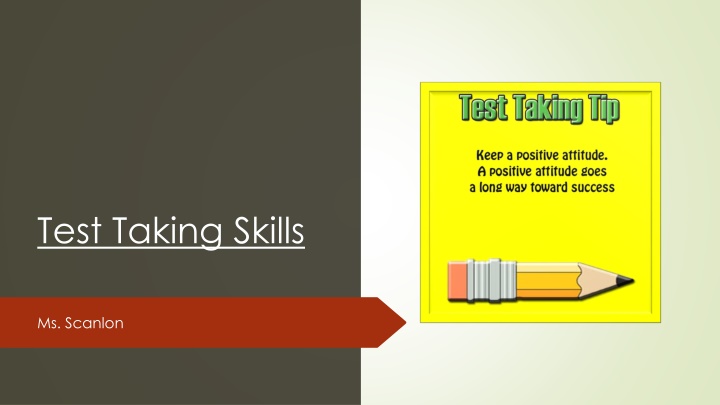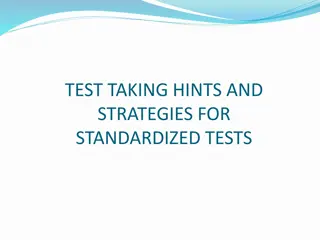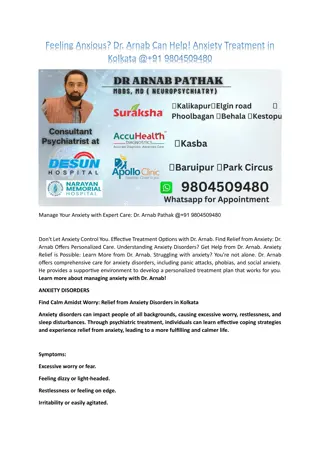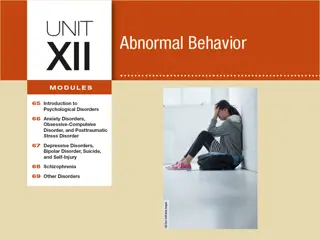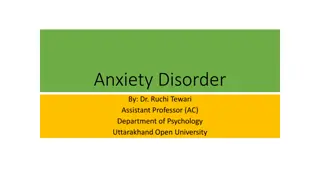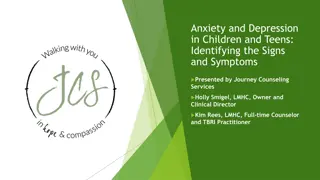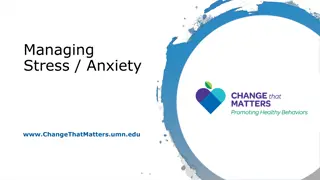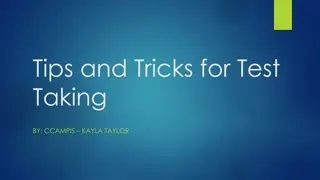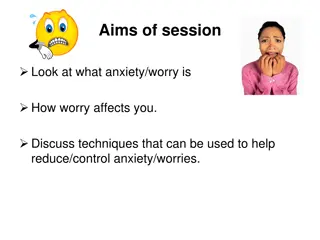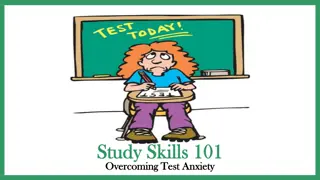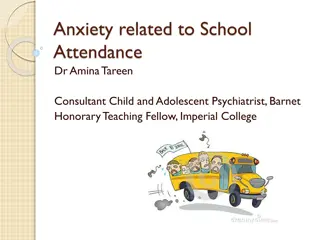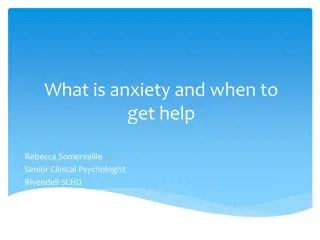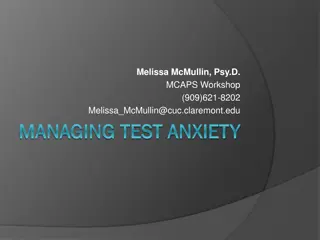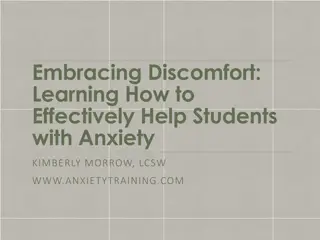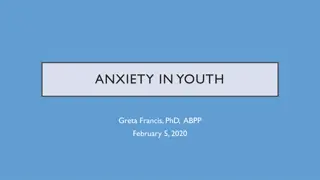Test-Taking Skills and Strategies: Beat Test Anxiety and Ace Your Exams
Understand what test anxiety is, learn how to manage it, and discover effective tips for preparing and taking tests. From recognizing symptoms to practical techniques like deep breathing and positive self-talk, this guide offers comprehensive advice to help you improve your test-taking skills and achieve better results. Take control of your test anxiety and boost your confidence with these actionable strategies!
Download Presentation

Please find below an Image/Link to download the presentation.
The content on the website is provided AS IS for your information and personal use only. It may not be sold, licensed, or shared on other websites without obtaining consent from the author.If you encounter any issues during the download, it is possible that the publisher has removed the file from their server.
You are allowed to download the files provided on this website for personal or commercial use, subject to the condition that they are used lawfully. All files are the property of their respective owners.
The content on the website is provided AS IS for your information and personal use only. It may not be sold, licensed, or shared on other websites without obtaining consent from the author.
E N D
Presentation Transcript
Test Taking Skills Ms. Scanlon
What is Test Anxiety? Test anxiety is a general fear and/or discomfort with taking tests. Anxiety runs along a continuum and ranges anywhere from very mild to severe. It is impossible for our bodies to be anxious and relaxed at the same time- can t be both. Symptoms of test anxiety: rapid heart rate, sweating, racing thoughts, restlessness, poor concentration, nausea Goal: reduce general anxiety and test anxiety
How to Manage Test Anxiety Be as prepared as possible- study in advance! Focus on your breathing- deep breathing: put both feet on the floor, put both hands on your stomach, and breathe in through your nose and exhale from your mouth Count back from 10 Release tension in your body Positive self talk: tell yourself you are smart, prepared, and will do well on your test! Avoid negative thoughts and catastrophizing
How to Prepare for Tests Play to your strengths- study the way that is best for your learning style Start studying in advance- if the test is on Friday, start studying Monday so you will have seen the material 4 times before test Re-read/re-write all notes each night before the test Do practice problems, especially for math and science Write down likely test questions and answers Ask teacher questions Get plenty of sleep and eat a healthy breakfast the day of the test
Test Taking Tips Distractors -usually 1 or 2 distractor answers you can easily eliminate STEP 1: Read the question and answer entirely. Do not jump to an immediate answer. Eliminate any distractors and once you do so, you increase your odds of choosing the correct answer. Read Question 1 and all 4 responses. 1) Breakfast is an important meal of the day. It is usually eaten at what time of day? a) At work b) In the morning c) At a cafe d) In the evening
Test Taking Tips (continued) STEP 2: Highlight or underline key phrases in the question that provide clues. 1) Breakfast is an important meal of the day. It is usually eaten at what time of day? STEP 3: Cross off answers that do not match the key phrases. a) At work (location- not time of day) b) In the morning c) At a caf (location- not time of day) d) In the evening STEP 4: Make a selection from the remaining 2 choices. Correct Answer: B) In the morning STEP 5: Fill in the correct response. If the test is scantron, make sure you select the correct answer on your physical test and bubble the correct answer on your scantron sheet.
Test Taking Tips (continued) Briefly flip through the entire test to see the composition of the test If the test is all multiple choice, divide the test time allotted by the number of questions to determine how much time to spend on each question. -Example: You have 50 minutes to take a test and there are 25 multiple choice questions. You have 2 minutes to complete each question. Look at point value to determine where to spend your time -Example: Your test contains 10 multiple choice questions and each question is worth 1 point=10 points. You have 2 essays worth 20 points each=40 points. Multiple choice is worth 10/50 points=20% and the essay is worth 40/50 points=80%. So you should be spending the majority of time on the essay because it is worth the most points. If you don t know the answer to a question, move on. Put a dot next to the question and come back to it later.
What NOT to do while test taking Don t rush through the test. Don t answer a question before reading the question and answers in entirety. Don t spend too much time on one question. If you don t know the answer, move on. Don t change your answers a lot. Go with your gut! Usually when you change your answer, you are generally changing it to an incorrect answer. Don t leave any questions blank- no penalty for guessing. Multiple choice: 25% chance of being correct.
High School Tests PSAT (Preliminary Scholastic Aptitude Test): Take twice- once during both sophomore and junior years. Only junior year score can count towards National Merit Scholarship (for top scores across the country) SAT (Scholastic Aptitude Test) or ACT Take twice- fall and spring of junior year -Study for the test! (College Board SAT Study Guide Book, College Board Word of the Day, College Board Question of the Day, SAT tutors and classes) -SAT is super scored, unlike ACT. SAT writing is not factored into score -Fee waiver if on free/reduced lunch or 21stCentury Scholar
High School Tests (continued) ASVAB (Armed Services Vocational Aptitude Battery) -Used by all branches of the military -Use ASVAB study guide -Helps determine specialty in military WorkKeys -Very relevant, solve actual workplace problems -Applied Math, Graphic Literacy, and Workplace Documents -If you pass all 3 components, you can receive a National Career Readiness Certificate
Remember: You are smart! You are prepared! You ve got this and will do great!
